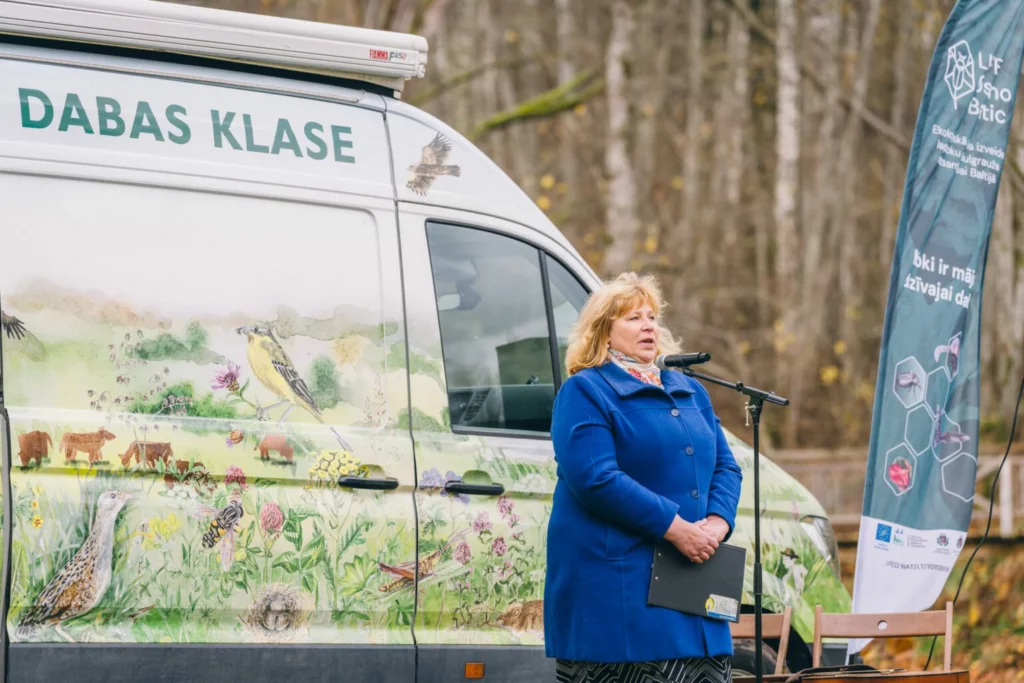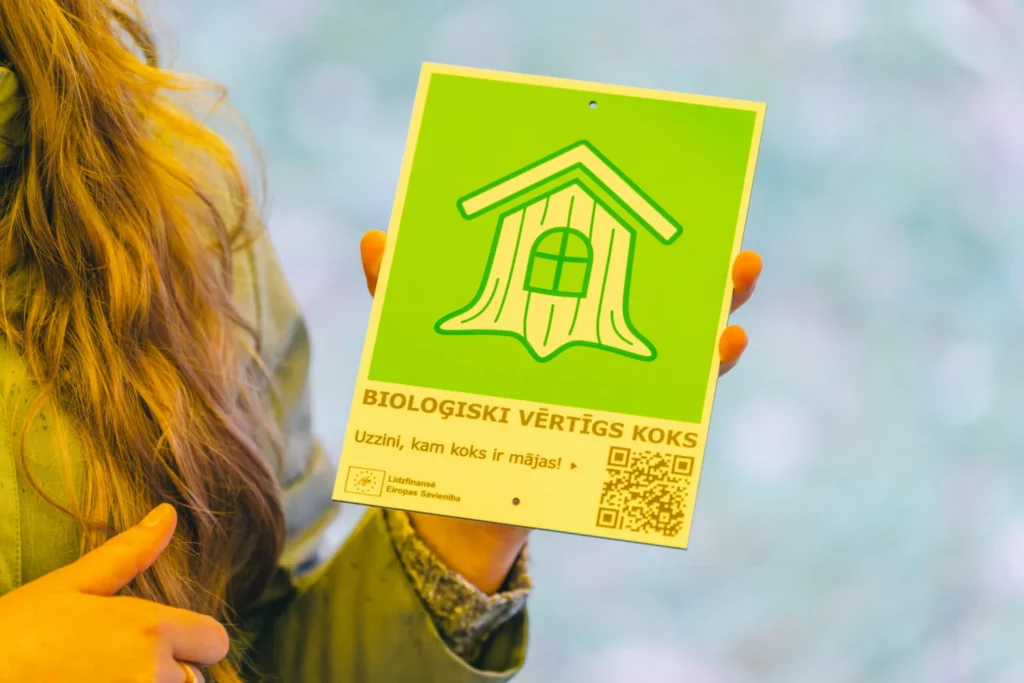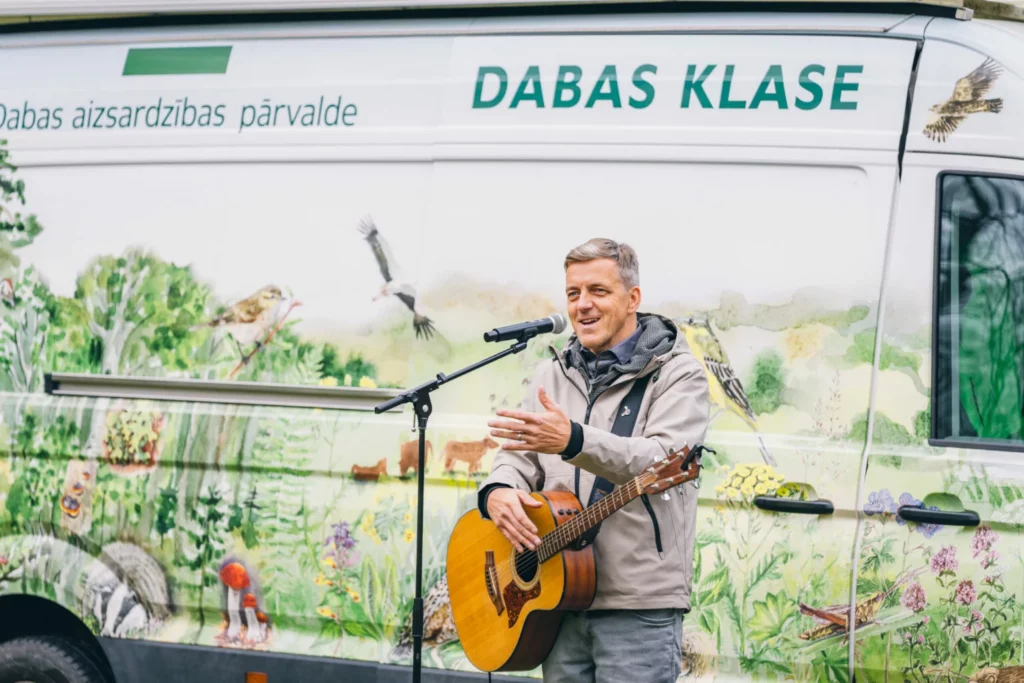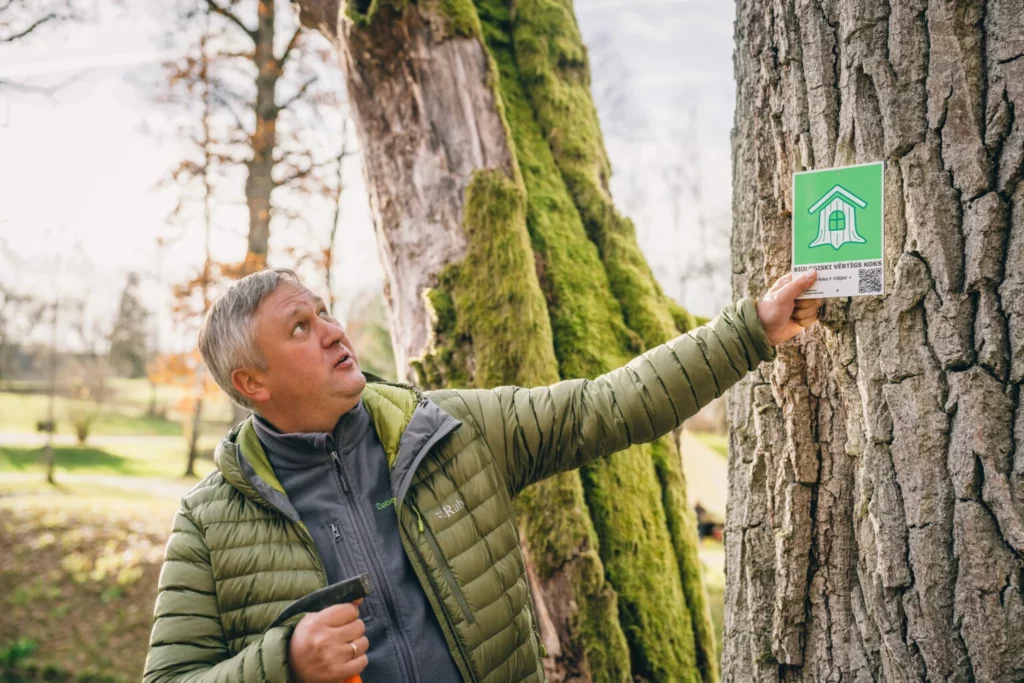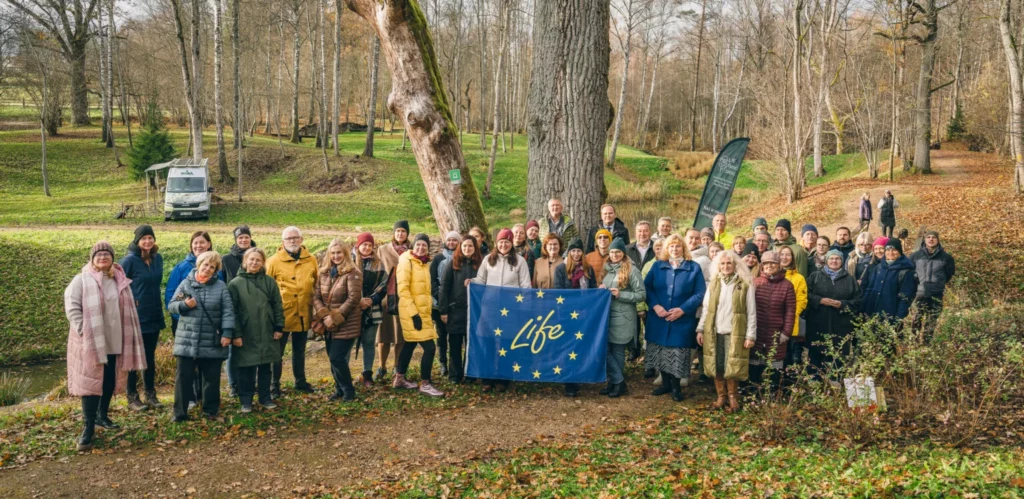Assessing the importance of old, biologically valuable trees in the diversity of nature and raising public awareness of their role in nature, the Nature Conservation Agency (the Agency) has created a new information sign – “Biologically valuable tree”. 10 000 signs will be placed on or near trees of biological value in public parks, nature trails, alleys and other publicly accessible places throughout Latvia.
On 31 October 2024, the first sign was attached to a magnificent oak tree in the restored Turaida Forest Park of the Turaida Museum Reserve. In the future, such signs will be installed not only by the management staff of the Agency, but also by public green space managers and arborists of municipalities. The idea of the sign was developed and is being implemented by the Nature Conservation Agency within the framework of the LIFE Osmo Baltic project.
“Withered away is not dead, but still alive. Trees do not die, but gradually wither away. This gives many invertebrates – bark beetles, longhorn beetles, bark dwellers, insect decomposers – the opportunity to decompose the tree gradually to get involved in the soil food chains”, said Voldemārs Spuņģis, a representative of the Entomological Society of Latvia.
The Latvian landscape is unimaginable without large trees. Trees provide aesthetic, emotional and material benefits for people, but most important is their role in the ecosystem. Trees are home to wildlife – fungi, plants and animals. For many species, the only way to survive is to interact with trees. In addition, the age of the tree, the environmental conditions around it and the presence of the withered tree are all important factors.
The old trees are also home to various species of insects, such as the hermit beetle (Osmoderma eremita), which also lives in the Turaida Forest Park. By protecting trees, we are also protecting their inhabitants.
Reference
* A biologically valuable tree is a tree, whether mature or old, living or dead, that provides habitat for a wide variety of living organisms – fungi, mosses, lichens, invertebrates, mammals and birds. A biologically valuable tree is any species of:
– a growing large-sized or biologically old tree;
– a hollow tree;
– a snag – a standing dead tree;
– deadwood;
– a mature tree damaged by lightning, fire or storm.
Biodiversity
Trees are biologically valuable habitats for a wide variety of organisms. These organisms can live in the tree for a short time but they can also live their whole lives. Trees provide ample opportunities for interaction between different species and ensure the long-term survival of many species. Dead tree is also an important habitat for different groups of organisms.
The competition between species (for suitable nesting sites and food resources in their vicinity) is more intense when the availability of suitable habitats for a species is reduced.
